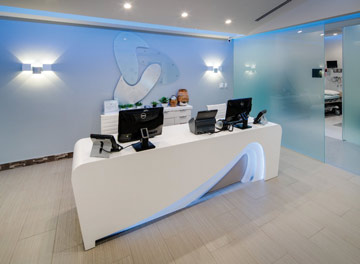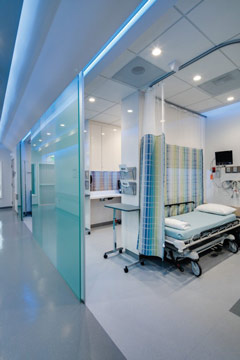Leading spine surgeons who are using robotics, surgical navigation and ultrasonic bone-cutting technology to realign the spine, fix pinched nerves, place implants and fuse vertebrae are helping shift complex procedures to outpatient facilities.
"That's benefitting patients in terms of less pain and faster recoveries, but it's also resulting in measurable benefits such as lower rates of complications and blood transfusions," says Christopher Good, MD, FACS, a spine surgeon and president of the Virginia Spine Institute in Reston, Va.
It can also benefit your facility. Innovations in spine surgery and emerging technologies are giving surgeons the tools and confidence they need to perform a host of procedures in outpatient ORs, from posterior cervical foraminotomy (for relief of pinched nerves) and anterior cervical discectomy and fusion (ACDF) to minimally invasive lumbar laminectomy and discectomy. Medicare is also reimbursing for select spine procedures performed in surgery centers, including neck and lumbar fusions and cervical discectomy. Dr. Good believes the number of procedures Medicare will pay for in the outpatient setting — and the number of cases you can host — will only increase as technology continues to advance.
James Petros, MD, MBA, founder and medical director for Allied Pain & Spine Institute, saw spine as a growing specialty and helped design and open the Trinity Surgery Center in San Jose, Calif. The 3,000-square-foot center has hosted about 1,400 spine and pain-management procedures annually since opening its doors in December 2016.
Equipment costs accounted for 35% to 40% of the facility's 7-figure start-up budget, according to Dr. Petros, the facility's managing partner. On the purchase list: Jackson and Wilson table frames, (because surgeons have different positioning preferences), a C-arm (costing about $85,000), a surgical microscope (which can range in cost from $100,000 for a basic model to $500,000 for a high-powered, high-optic model). Dr. Petros and his colleagues also purchased pneumatic drills and spine instrumentation sets, including lumbar and cervical trays, retractors and implants.
Is investing in robotic technology worth it? Dr. Good thinks so. He says the price of a robotic platform ranges from a couple hundred thousand dollars to $1 million, depending on features needed to match the complexity of the procedures surgeon-users perform. That's a significant investment, for sure, but the improved accuracy afforded by the technology can help prevent costly post-op complications, points out Dr. Good. He says minor complications following lumbar spine surgery might cost $8,000 to treat, and a major one $30,000. Revision surgery, adds Dr. Good, could cost between $10,000 and $30,000.
.svg?sfvrsn=be606e78_3)


.svg?sfvrsn=56b2f850_5)